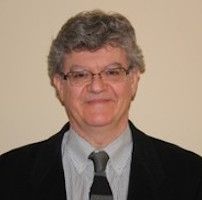Article
Pneumonia Symptoms, Burden Lengthened in COPD Patients
Author(s):
Most surveyed comorbid patients reported they required the help of family, friends or caregivers during pneumonia recovery, and needed an average of 28 days of care.

Cara B. Pasquale, MPH
Community-acquired pneumonia (CAP) can have a significantly worse effect among patients with chronic obstructive pulmonary disease (COPD) than those without, according to a new report.
Investigators from across the US conducted a pair of surveys in order to assess the symptom burden of CAP, report the time to symptom recovery, and determine the impact of CAP on daily activities among COPD patients. The participants took the baseline survey within 120 days of the onset of self-reported CAP, defined as being informed of their diagnosis by a healthcare provider that they had pneumonia. The second survey was conducted 30 days later.
Both questionnaires asked about CAP symptoms and impact of CAP on work and daily life. All of the participants had been previously diagnosed with COPD, emphysema or chronic bronchitis. They were also reimbursed $10 after completing both surveys.
The study authors included 481 eligible participants in their analysis. Two-thirds of the population were men, and about half were currently employed and half identified as current smokers. Nearly all of the participants (91.1%) reported being hospitalized for their CAP. At the time of their diagnosis, 90% of the patients reported the presence of respiratory-related symptoms including dyspnea, cough, thick mucus or phlegm, wheezing, pain from cough, as well as fever, and sweats, the study authors said.
About 60% of the generalized symptoms included weak appetite and trouble sleeping, while half of patients noted confusion or trouble thinking.
It took about 3 weeks or longer for respiratory-related symptoms to resolve, the study authors determined. It took longer for the generalized symptoms, such as headaches, gastrointestinal symptoms, chills, and fever to return to normal.
CAP had a significant impact on both work and daily activities for the COPD patients, the investigators said. Nearly all of the employed patients reported missing work, missing an average of 21.6 days, but needing another 14 days to return to “usual” job performance. The majority of the group that wasn’t working (87.5%) reported missing a day or more of usual activities. They needed an average of 10 days to return to usual activities. Nearly all of those surveyed (84.6%) required the help of family, friends or caregivers during CAP recovery; they said they needed an average of 28.2 days of help.
Study author Cara B. Pasquale, MPH, told MD Magazine® that the long-term effects of CAP on top of COPD were significant. Patients with COPD experienced weeks of persistent symptoms.
“While we knew people with COPD would face an increased burden from CAP compared to the rest of the population, the burden ended up being greater and lasting longer than anticipated,” Pasquale said.
While just 10% of those surveyed were older than 65 years, investigators noted that age didn’t seem to lengthen recovery time for most symptoms. Coughing, pain from coughing, thick phlegm and fever were exceptions, though, and were linked to longer resolution times with older age.
“The findings highlight a real need for prevention measures for CAP in this vulnerable population which should include encouraging healthcare providers to improve their immunization rates for annual influenza and pneumococcal vaccinations among the COPD population,” Pasquale concluded.
The study, “Patient-Reported Consequences of Community-Acquired Pneumonia in Patients with Chronic Obstructive Pulmonary Disease,” was published online in Chronic Obstructive Pulmonary Disease, the Journal of the COPD Foundation.




